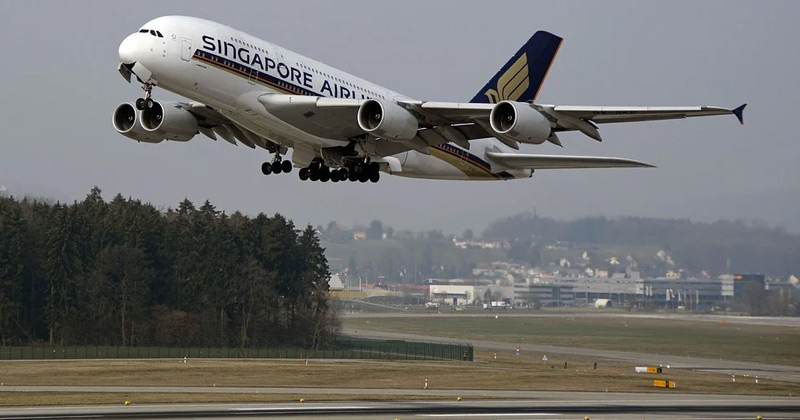Airplanes weigh hundreds of tons and yet they take off and fly you to your destination. What exactly is it that makes planes fly? The secret is a principle that you often come across at traffic lights. Let’s find out why airplanes can fly despite being so heavy?

The world’s largest aviator is Antonov An-225. It weighs around a whopping 285 tons without the cargo. Lockheed SR-71A Blackbird is the fastest airplane in the world with a speed of around 3,500 km/h. Aircraft are capable of amazing things which include flying themselves. How is that actually possible? Why can airplanes fly despite being so heavy? Let’s see.
Put simply, it is the interplay of four physical forces that allows an aircraft to fly, provided the relationship between these forces works.
- The propulsion (it moves the plane forward)
- The resistance (it pushes the airplane backward)
- The buoyancy (it pushes the airplane upwards)
- Gravity (it pushes the airplane downwards)
Why Does an Airplane Take Off? – Why Can Airplanes Fly
As the aircraft propels, air flows past its wings. When this air is directed downwards, a counterforce develops at the same time. This force works in the opposite direction, which is upwards, and a dynamic buoyancy is created.
But only when the buoyancy is stronger than the force of gravity, the plane rises. The more throttle the pilot gives, the more air passes the wings. So, increasing pace is one way to gain height.
Suggested Read: How Are Black Holes Formed
But How is The Air Redirected?

In addition to propelling the aircraft, there are two other conditions for it to rise into the air:
- A suitable profile of its wings which means their shape in cross-section. Among other things, the wing should generate little flow resistance because it makes flying more difficult.
- This is the angle at which the wings face the incoming air and divert this air downwards.
These two characteristics, along with the speed, also determine how much air is diverted downwards. In this respect, the weight of an aircraft is not a problem provided that the interaction of speed, wing profile, and angle of attack counteracts accordingly.
At least with some of the aircraft, there is an effect that goes back to the Swiss mathematician Daniel Bernoulli. This effect occurs on the wings of the aircraft. If you look closely at the wings, you can see that they are slightly curved at the top. As a result, the air flows faster above the wing than at the bottom. This creates an over-pressure at the bottom and a vacuum at the top because of which the wings and the aircraft are sucked upwards.
The Reversal of Buoyancy is Downforce – Why Can Airplanes Fly

You can always see a reversal of this effect at the traffic lights, on the rear spoiler of the car in front of you. This spoiler is basically shaped like an upside-down wing and it is slightly bent up at the back. In this way, it redirects the air flowing past and the opposite force acts downwards. That is why downforce increases and helps to keep cars firmly on the ground even at very high speeds.
Suggested Read: Where to Find The Safest And Best Places on The Plane
So, that’s why can airplane fly despite being heavy and carrying a lot of additional weight. Science and technology have come a long way, the aviation sector has prospered so much in the past few years with new airplanes weighing hundreds of tonnes are capable of flying long distances.


